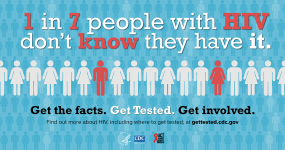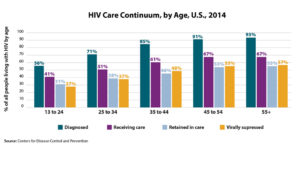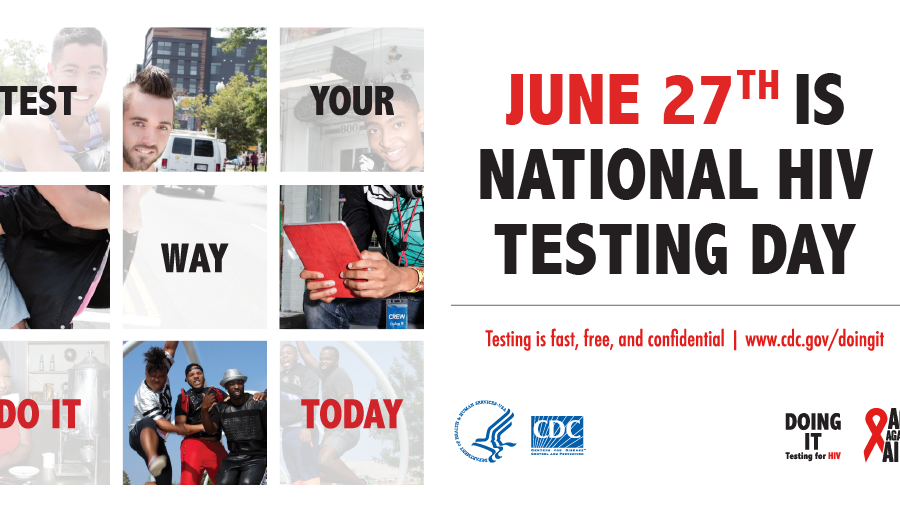Today is National HIV Testing Day, and one of the most fulfilling conversations to have with persons living with HIV (PLWH) is to share that since the 1980’s, we have made significant progress in the management of the AIDS epidemic. FDA approval of 27 antiretrovirals and 20 fixed dose combination antiretrovirals, increased HIV testing campaigns and funding for HIV care through the Ryan White Comprehensive AIDS Resource Emergency (CARE) Act have made it possible for millions of persons with HIV to live fulfilling lives. Notwithstanding these amazing movements, eliminating HIV remains a moving target as stigma and socioeconomic, racial, age and gender disparities result in inequalities of diagnosis, linkage to and retention in care.
 In 2006, the Centers for Disease Control and Prevention (CDC) recommended universal HIV screening, which was endorsed by the United States Preventive Services Taskforce (USPSTF) in 2013. Despite these recommendations, 1 in 7 persons living with HIV (PLWH) in the United States are unaware of their diagnosis. When stratified by age, young people between the ages of 13-24 account for 22% of all new HIV diagnoses in the U.S., but 44% of PLWH in this age group are unaware of their diagnosis (the highest percentage among all age groups).
In 2006, the Centers for Disease Control and Prevention (CDC) recommended universal HIV screening, which was endorsed by the United States Preventive Services Taskforce (USPSTF) in 2013. Despite these recommendations, 1 in 7 persons living with HIV (PLWH) in the United States are unaware of their diagnosis. When stratified by age, young people between the ages of 13-24 account for 22% of all new HIV diagnoses in the U.S., but 44% of PLWH in this age group are unaware of their diagnosis (the highest percentage among all age groups).
HIV testing is available at multiple locations. You can ask your primary care clinician to test you for HIV, but did you know that you can get tested for free or low cost at multiple locations near you? These can be local nonprofits like the Nebraska AIDS Project (NAP), your County Health Department like the (Douglas County STD Clinic). Getting tested for HIV can be quick, easy and confidential – go to bit.ly/NHTD2017 and enter your zip code to find an HIV testing location near you. Our Specialty Care Clinic works closely with the Douglas County STD Clinic and NAP. We treat PLWH diagnosed with HIV at these locations and provide pre-exposure prophylaxis (PrEP) for patients who are at risk.
 The HIV Care Continuum demonstrates our progress and areas for improvement towards our goal of eliminating HIV. While 85% of persons living with HIV (PLWH) are aware of their diagnosis, less than 50% of these people have achieved viral suppression. PLWH who are not virally suppressed are at risk of transmitting the virus to others, subsequently repeating the cycle of infection. Therefore successful campaigns to end HIV must not only focus on diagnosis and treatment, but also prevention. HIV treatment as prevention for PLWH and Pre-exposure prophylaxis (PrEP) for persons without HIV (but are at risk for becoming infected) are very powerful prevention tools that require retention in care. We need to test more people for HIV so that 15% of undiagnosed PLWH are brought into care, but a greater challenge beyond that lies in our ability to retain PLWH engagement in care.
The HIV Care Continuum demonstrates our progress and areas for improvement towards our goal of eliminating HIV. While 85% of persons living with HIV (PLWH) are aware of their diagnosis, less than 50% of these people have achieved viral suppression. PLWH who are not virally suppressed are at risk of transmitting the virus to others, subsequently repeating the cycle of infection. Therefore successful campaigns to end HIV must not only focus on diagnosis and treatment, but also prevention. HIV treatment as prevention for PLWH and Pre-exposure prophylaxis (PrEP) for persons without HIV (but are at risk for becoming infected) are very powerful prevention tools that require retention in care. We need to test more people for HIV so that 15% of undiagnosed PLWH are brought into care, but a greater challenge beyond that lies in our ability to retain PLWH engagement in care.
How can YOU help to end the AIDS epidemic? Get tested. Encourage your friends and partners to get tested. If you test positive, get into care with an HIV clinician, and STAY in care. If you are a clinician, screen your patients for HIV, regardless of perceived risk; offer high risk patients PrEP, and commit to keep your patients engaged in care.
